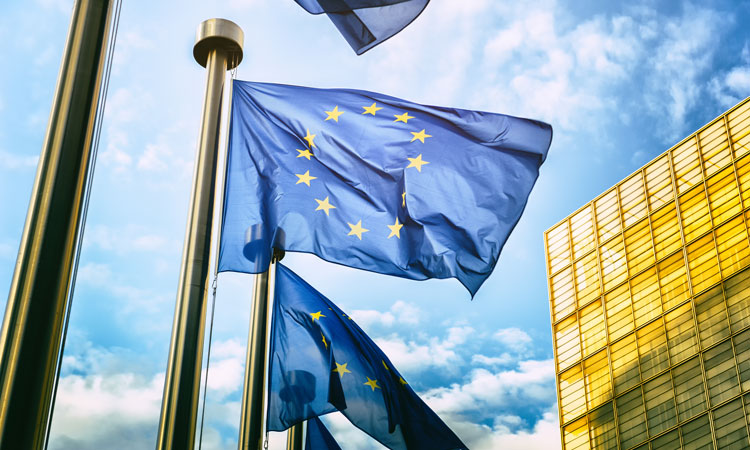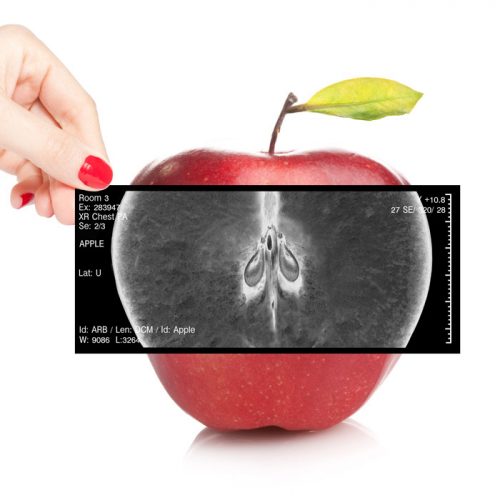Food irradiation legislation in the EU – an evaluation
Posted: 21 June 2018 | Bernd van der Meulen, Maria Antonietta Ruggiero | No comments yet
Bernd van der Meulen and Maria Antonietta Ruggiero look at the current state of play, and discuss the direction in which they’d like to see the current framework evolve.


The European Commission has been working on improving and simplifying legislation on food irradiation in the EU since 2002. The Regulatory Fitness and Performance programme (REFIT) platform was launched in 2015 to further enhance this process. The Commission’s aims are to ensure that EU legislation delivers results for citizens and businesses effectively, efficiently and at minimum cost. REFIT aims to keep EU law simple, remove unnecessary burdens and adapt existing legislation without compromising on policy objectives. One of the topics the European Commission aims to address in its REFIT project is the directive from 1999 on the irradiation of foodstuffs.
The legislation on irradiation faces two challenges: it is outdated and involves a taboo technology. Many consumers erroneously associate irradiation with nuclear energy and radio activity – concepts that they may reject for health, political or other reasons. Given that any technology involving irradiation is likely to arouse deep suspicions, irrespective of its actual risk profile or its potential to contribute to food safety, the scope and requirements of the legislation are very important for the viability of those food safety technologies to which it may apply.
In this article, we will first provide a technical overview of the content of current EU legislation on food irradiation. Then we will highlight some points of concern that we hope the European Commission will take into consideration when evaluating the current framework.
The current legal framework on food irradiation in the EU
The legal framework consists of two directives. The most important one is the Framework Directive 1999/2/EC “on the approximation of the laws of the Member States concerning foods and food
The legislation on irradiation faces two challenges: it is outdated and involves a taboo technology.
ingredients treated with ionising radiation”. The second is Implementing Directive 1999/3/EC, “on the establishment of a Community list of foods and food ingredients treated with ionising radiation”. The fact that the European legislature chose the directive rather than the regulation as instrument means that implementation in national legislation is required. It is this national legislation with which the businesses concerned must comply. In practice, this has resulted in a patchwork of differing national legislations, severely hampering trade in the EU market.
Directive 1999/2/EC indicates that approval of irradiation facilities shall only be granted if the facility meets the requirements of the Codex Alimentarius Commission Recommended International Code of Practice for the operation of irradiation facilities used for the treatment of foods. This is one of the very rare examples where a piece of the Codex Alimentarius is directly incorporated within EU food law. Not only that, it also refers to any supplementary requirement that may be adopted by the Codex Alimentarius Commission. At present, these seem to cover the CAC Code of Practice for Radiation Processing of Food and the General Standard for Irradiated Foods.
Content of the legal framework
Directive 1999/2/EC defines as its scope of application: foodstuffs treated with ionising radiation.
It provides an authorisation requirement for irradiation facilities and details the conditions that these facilities must meet to be eligible for authorisation. Authorised facilities must keep detailed records of their practices.
It provides a list comprised of three sources of irradiation that may be used. Banning all other sources. These are:
- gamma rays from radionuclides 60Co or 137Cs
- X-rays generated from machine sources operated at or below a nominal level of 5 MeV;
- electrons generated from machine sources operated at or below a nominal level of 10 MeV.
It introduces a so-called positive list of foodstuffs that may be irradiated with maximum (overall average) dose for the intended purpose. For all foods not included in the list, irradiation is prohibited. So far, hardly any products have been included in the list.
The allowed purpose of irradiation is limited to destroying pathogenic organisms, destroying spoilage organisms, reducing loss by premature ripening, germination or sprouting, and ridding foodstuffs of organisms harmful to plant or plant products.
Irradiation may only be authorised if four cumulative requirements are met:
- there is a reasonable technological need
- it presents no health hazard
- it is of benefit to the consumer
- it is not used as substitute for good hygiene and other practices.
Detailed prescriptions are given as to the way of irradiating, including the dose received by the irradiated foodstuffs. This dose must be monitored on different places in the batch. Apparently, the radiation must be distributed throughout the entire product, as the directive requires that the ratio between the maximum dose received and the lowest dose received (the so-called dosimetry) should not exceed three. In other words, the lowest dose should not be more than three times lower than the highest dose. This indicates that the legislature assumed that pathogenic organisms are evenly distributed throughout the product.
Finally, it is required that all irradiated foodstuffs ingredients are labelled as such.
As we understand it, this legislation aims to prevent the abuse of irradiation that occurs when it is used instead of proper hygiene practices; to prevent hazards from occurring due to too-high doses of irradiation and to prevent hazards occurring due to insufficient irradiation.
Challenges and problems
As is often the case, the emergence of novel technologies raises questions as to how the law should be understood in the face of new realities. In this case of irradiation, the questions mainly relate to the scope of the legislation and its purpose.
Within the food industry, increasing attention is paid to surface decontamination of certain product 

The question that now presents itself is whether such surface decontamination technologies are within the scope of the legislation and, if so, if they can be allowed.
In cold plasma technology, ionisation is applied through gas. What is it that the legislation really aims to cover? Is it ionisation no matter how applied? Or is it only ionisation applied through radiation? In the first reading, cold plasma would probably be within the scope. In the second reading further questions present themselves; for example, whether for the purpose of the legislation, ionising gasses must be seen as sources of radiation? If ‘yes’, they would be sources that are thus forbidden. Or can we simply say, gas is not radiation, therefore cold plasma is outside the scope of the legislation and thus it is allowed? And what if we then use low energy electrons to produce the cold plasma?
The questions regarding low-energy electrons are different. The legislation defines its scope in terms of
the European Commission needs firstly to confront the question of whether or not it wants those novel soft technologies limited to surface treatment, such as cold plasma and low energy electrons, to be covered by this legislation, which for all practical purposes prohibits the use of technology.
‘ionising radiation’. Is there a minimum level of ionisation below which the legislation does not apply? There has to be such a limit, as the concept of ‘zero’ in this context does not exist. The same question is relevant to the level of energy applied. The legislation only sets a maximum of 10 MeV. Low energy electrons have energies of 0.3 MeV or lower. Does the legislation aim to cover such low levels of energy? If ‘yes’, the technology faces a problem – at least as far as direct application to foods is of concerned (its application to packaging and other food contact materials is not covered by the legislation).
This problem is the required dosimetry. The requirement that the lowest dose should not be more than three times lower than the highest dose cannot be met in the case of surface treatment. If just the surface is treated, the dose received inside the product will be almost zero. No matter the size of the dose applied to the outside, if it is divided by zero, the outcome will be infinite (which is larger than three). A way out of this dilemma would be to allow the producer the freedom to decide which parts of the food should be treated and which parts not. If we settle for this interpretation, the untreated parts do not bring the minimum dose to zero, but do need not be taken into account in finding the minimum dose.
These are just two examples of questions raised by the potential application of EU legislation on food irradiation to novel technologies. Clearly any legislation that provokes so many uncertainties regarding its application is not fit for purpose.
What to do?
In our view, in its reassessment of the legislation, the European Commission needs firstly to confront the question of whether or not it wants those novel soft technologies limited to surface treatment, such as cold plasma and low energy electrons, to be covered by this legislation, which for all practical purposes prohibits the use of technology. Experience has shown that hardly any foods are included in the positive list of foods that may be irradiated and, in so far as irradiation does take place, consumers seem unwilling to accept it. In this sense irradiation is taboo, adding all the more urgency to the need to clarity what we do or don’t mean by the term food irradiation. In the Dutch-language version of the Directive, the word chosen for ‘irradiation’ is ‘doorstraling’. This word implies that radiation goes through the product. If one would follow this understanding, the soft surface technologies would not be covered by the legislation. In English and most other EU languages, however, a word is chosen, like ‘irradiation’, that is neutral. It can apply both to radiation that goes through the product and that only touches the outside of it.
Once the Commission has decided whether it does or doesn’t want soft technologies to be covered, this should be made explicit in a better framing of the scope of the legislation. If the Commission does wish to have these technologies within the food irradiation scope, it should take a position towards surface treatments or partly irradiated products. The dosimetry requirement should be clarified accordingly.
Finally, in our view, the way in which the directive makes reference to the Codex Alimentarius makes it difficult to assess which requirements actually apply within the EU. It would be our preference to see the Commission actively implement those elements from the Codex it deems valuable by including them in the EU legislation.
In this way, the European Commission can live up to its ambition to make “EU law simple, remove unnecessary burdens and adapt existing legislation without compromising on policy objectives”. The greater number of safe food-safety technologies that are available, the better safety can be assured without compromising the nutritional value and culinary pleasures of food.
About the Authors




Issue
Related topics
Contaminants, Food Safety, Processing, Regulation & Legislation, Technology & Innovation









